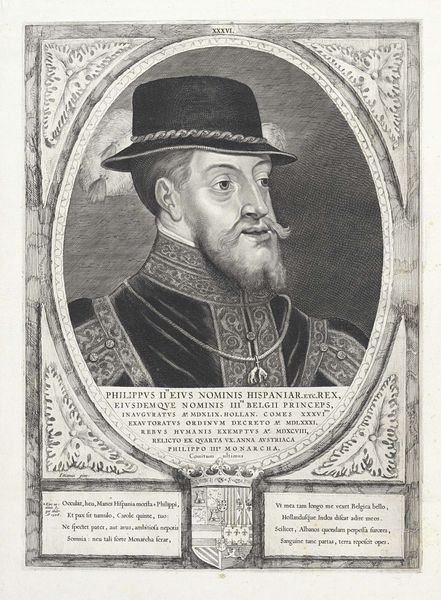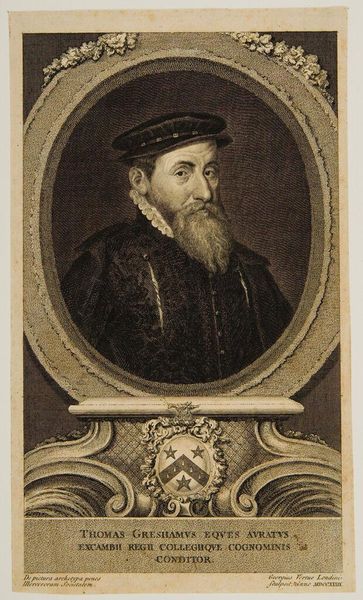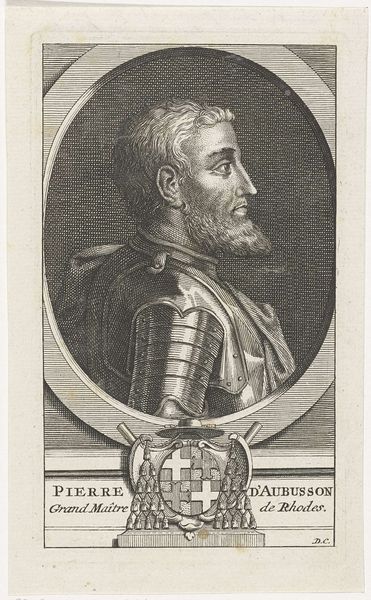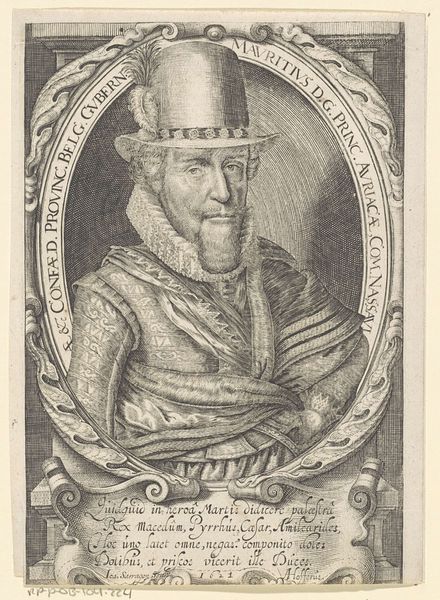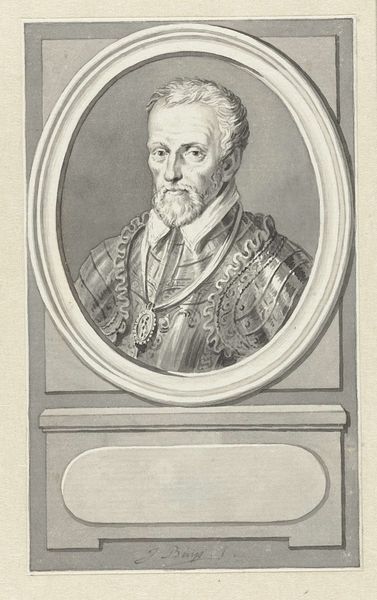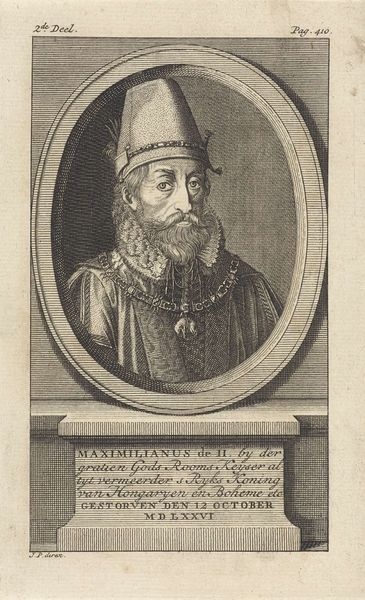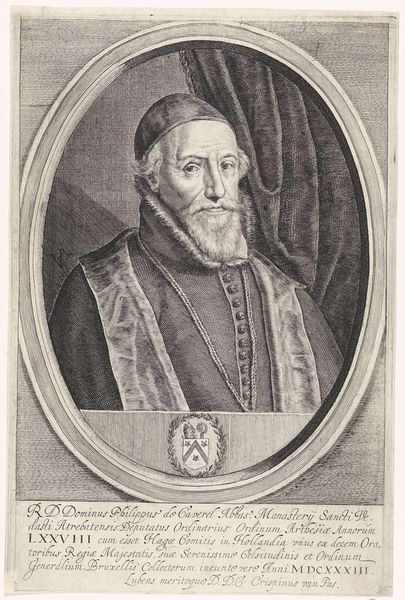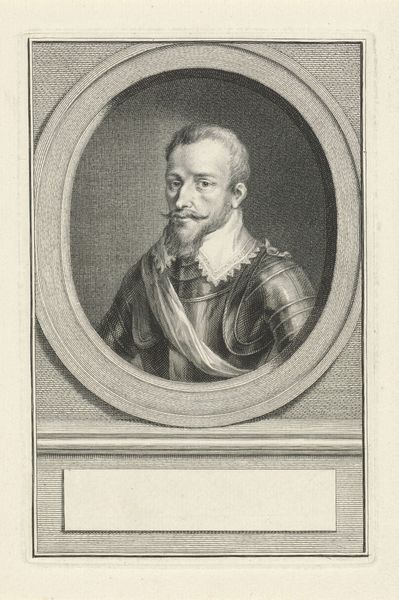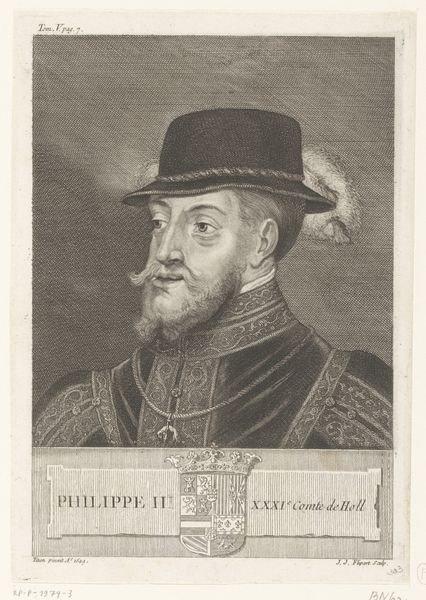
engraving
#
portrait
#
baroque
#
old engraving style
#
caricature
#
pencil drawing
#
history-painting
#
engraving
Dimensions: height 145 mm, width 87 mm
Copyright: Rijks Museum: Open Domain
Curator: Here we have "Portret van koning Filips II van Spanje," an engraving created in 1733 by François Morellon La Cave. It resides here at the Rijksmuseum. Editor: My first impression is a sort of austere elegance, conveyed through the fine lines of the engraving. It appears quite meticulous. Curator: It is meticulous, certainly. It offers a window into how Philip II wished to be perceived, reflecting the carefully constructed image of the Spanish monarchy in the 18th century. The artist, though, likely had a political agenda depending on whether they were commissioned by the Spanish crown or opposed its rule. Editor: It's fascinating to think about the labor involved. All those lines meticulously etched into a metal plate... what sort of tools and process were used? How accessible would this image have been, in terms of both cost and distribution, during its time? Curator: These engravings served an important role in disseminating the image of the monarchy and influencing public opinion. It's a far cry from today’s mass media, of course, but it was a crucial tool of statecraft and public relations back then. Prints such as these, despite their detailed artistry, allowed for relatively inexpensive reproduction of royal portraits to be disseminated widely to maintain power. Editor: Did the engraver's identity—La Cave—matter, though? Was there an established school or style, workshops where apprentices learned, hierarchies influencing who got commissions? Was there anything particularly skilled or interesting with La Cave's particular means for reproducing this likeness? Curator: Indeed. The artistic guilds and the patronage system dictated who got commissions. The baroque style evident here was also crucial, conveying a sense of grandeur and authority that reflected the political aspirations of the depicted. Whether La Cave broke any barriers by depicting him using unusual processes of production, I would not say so. The material and aesthetic choices, the engraver’s skill…all contribute to shaping the viewer’s perception of the King and the monarchy itself. Editor: And perhaps in this detailed engraving, a kind of manufactured aura forms where an accessible, material print of a powerful subject influences social perceptions? A king made accessible to the hands. Curator: Precisely. It really exemplifies how art and politics intersected during this period. The control and politics of imagery is extremely important to consider. Editor: Thinking about the means and methods really helps contextualize how potent these printed images would be during their own time.
Comments
No comments
Be the first to comment and join the conversation on the ultimate creative platform.
